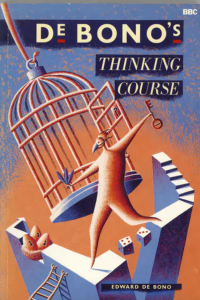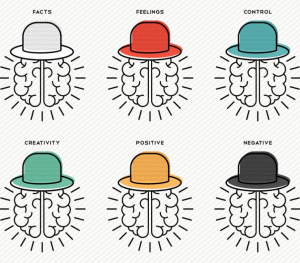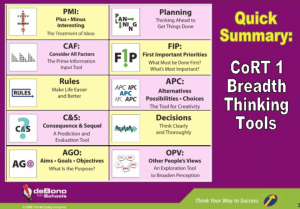 I am walking throughout my neighbourhood more than I ever have. It allows me to think, to pause, and I often stop to smell the flowers – literally – and to see what books my neighbours have put out on the lawn. There have been some real gems! I’ve added to my Seth Godin library with three books recently, and we’ve grabbed some great fiction. Last week, when I saw this book, I took it on a whim. I was intrigued by the title – that this was a “course'”. And it is – a beautiful combination of learning, practice and reflection. It is NOT a manual, but rather it is an exercise on thinking.
I am walking throughout my neighbourhood more than I ever have. It allows me to think, to pause, and I often stop to smell the flowers – literally – and to see what books my neighbours have put out on the lawn. There have been some real gems! I’ve added to my Seth Godin library with three books recently, and we’ve grabbed some great fiction. Last week, when I saw this book, I took it on a whim. I was intrigued by the title – that this was a “course'”. And it is – a beautiful combination of learning, practice and reflection. It is NOT a manual, but rather it is an exercise on thinking.
Thinking about ‘what thinking means’, and then practicing different ways of thinking, and then reflecting on how this practice might influence one’s thinking habits, reactions and paradigms has been… well… hard, difficult, challenging. But also hopeful, with humour and humility.
You’d be interested in this book if you:
1) Want to shift your (and your students) self-perception to “I am a thinker” (this is the main hope of De Bono!)
2) Want tools and strategies to practice thinking differently
AND
3) Are interested to know why it is important to do so
4) Want to consider what is the role of “Thinking” in education
Reframing Thinking:
Famous for his 6 Hats, which I honestly don’t know too much about, I had heard of  De Bono’s work before, and was surprised as I read to see how much of it has been integrated into Design Thinking and education in general. Protocols like “Plus Minus Interesting”, and PISCO, as well as “Growth Mindset” (though he doesn’t use that term) are ways of thinking that I am used to. However, what I really enjoyed about this book were the ways that “thinking” and the power of thinking are framed.
De Bono’s work before, and was surprised as I read to see how much of it has been integrated into Design Thinking and education in general. Protocols like “Plus Minus Interesting”, and PISCO, as well as “Growth Mindset” (though he doesn’t use that term) are ways of thinking that I am used to. However, what I really enjoyed about this book were the ways that “thinking” and the power of thinking are framed.
Lateral thinking can be precisely defined as pattern-switching with a
patterning system. To explain the nature of a pattering system takes quite a long time. So in ordinary terms we can describe it as the ability to look at things in different ways…Intelligent people often tend to be conformists. They learn the rules of the game and make use of them to have a comfortable life. At school they learn the rules of the game…The paradox is that if we treat creativity(in the form of lateral thinking) as a perfectly sober part of information processing then we may get the strange effect of the conformists being the more creative than the rebels – because the conformists are also better at playing the rules of creativity. If creativity is no longer a risk then non-risk takers may decide to be more creative. (Pg. 55)
He advocates for thinking to be a discreet course taught in schools – and what an impact this would have – as he describes above! How might we reduce/eliminate the risk of lateral thinking and thus increase creative thinking in our schools?
The Role of Humour:
I have been told in the past that my humour is “pun-ishing” 🙂 De Bono advocates for the use of humour – in particular the pun – as a way of thinking. “Humour involves the escape from one pattern and the switching into another” (pg. 53) This is true. To find humour in discussions, strategic planning, interviews, what have you, requires lateral thinking. For example, “Donald Trump had a bad Birthday. He was only given three golf clubs. And of the three, only one of them had a pool.” See how we have to switch our thinking as the joke reaches the conclusion.
So, find the humour as an excercise.
The Role of Emotions in Thinking:
I have written before about the role and importance of emotions in thinking and continuous learning. Emotions and feelings are vital for us to understand and to use to help us navigate the world. What De Bono brings into clear focus is the role of emotions.
We need to place emotions, feelings and values in their proper perspective. In the end they are the most important part of thinking – but only if they are used in the end rather than at the beginning. (pg. 136)
I love this sentiment as a strategy. And he has many strategies to support how to think in different ways before reacting to emotional provocations. This comes down to self-regulation and it is one of the most important pieces to humanity getting along.
The Role of Values in Thinking:
Given the current ‘double pandemic’ we are facing with Covid-19 and anti-black racism, slowing down our thinking has never been more important. Knowing where we stand, what we stand for, who we will stand up for, and who we will stand against, and where we will stand our ground, required thinking. But a thinking that is steeped in values.
Values are the link between events and our basic emotions. They are converters which convert events into matters about which we can feel strongly.
Our language is so important when we enter into a discussion, because we can tend to use value-laden words. Thus, if we lay on the rhetoric thick with our values, then we don’t have to hear the other side. Words can have an intrinsic negative value and positive value. We have to leave room for a values-based discussion. This is not a simple task.
Thinking should be confident. Any skill is better if it is done with confidence – be it skiing or playing tennis. There is, however, a big difference between being confident and being arrogant…A confident thinker does not have to prove himself right and the other person wrong. He or she sees the thining as an operating skills, not as ego-achievement. A confident thinker is willing to listen to others. He is willing to improve his thinking by acquiring a new idea or a new way of looking at things. (pg. 123)
I would place this next to his concept of ‘Negative Thinking’ as both are blockers to truly thinking in a way that leads to continuous improvement. Negative thinking is “…the refuge both of the mediocre mind and also – alas – of the brilliant mind. The mediocre mind is incapable of doing anything else find criticism easy since it is on of the cheapest forms of thinking. By that I mean that you can criticise anything at all by just choosing a frame different from what you see.” (pg. 79)
We avoid arrogance and negative thinking by being intentional about our thinking, about our dialogue with others, and about how we see ourselves as a learner.
 In these times, thinking differently, and being open to the thinking of others is needed more than ever. I am proud to say that I believe that both Cohort 21 and CAIS Strategic Change Accelerator function to do just this: hold the space for others, not jump to conclusions, and not to jump to negative criticism. How might we bring this thinking to our work, to our students and to our society – the way we engage with others. It’s time… time to take our time, and we must give ourselves this time.
In these times, thinking differently, and being open to the thinking of others is needed more than ever. I am proud to say that I believe that both Cohort 21 and CAIS Strategic Change Accelerator function to do just this: hold the space for others, not jump to conclusions, and not to jump to negative criticism. How might we bring this thinking to our work, to our students and to our society – the way we engage with others. It’s time… time to take our time, and we must give ourselves this time.
